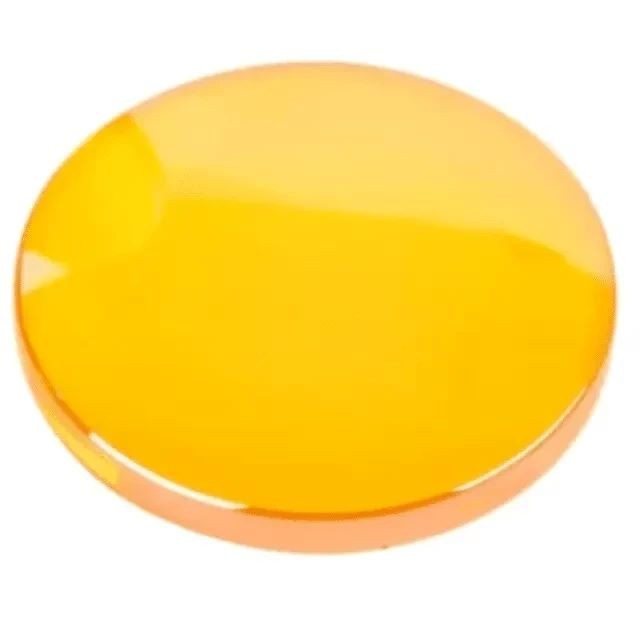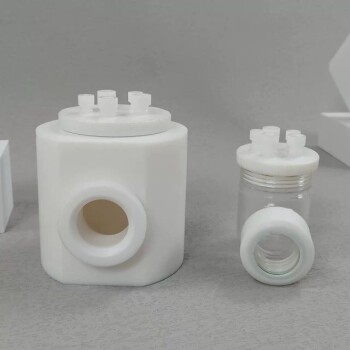
Optical Materials
Zinc Selenide ZnSe Optical Window Glass Substrate Wafer and Lens
Item Number : KTOM-ZSW
Price varies based on specs and customizations
- Transmittance
- 99%
- Diameter Tolerance
- 10ZS: ±0.2 mm ZNW: +0.0/-0.1 mm
Shipping:
Contact us to get shipping details Enjoy On-time Dispatch Guarantee.
Why Choose Us
Reliable PartnerEasy ordering process, quality products, and dedicated support for your business success.
ZnSe windows / substrate / optical lens
ZnSe windows are ideal for a variety of infrared applications including high power CO2 laser systems. Zinc Selenide has low infrared absorption and high thermal shock resistance. However, due to the soft nature of the material, the ZnSe window must be handled with care.
Detail & Parts





Advantages of ZnSe window / substrate / optical lens
- ZnSe has a high refractive index and needs to be coated with an AR coating to achieve high transmittance.
- Zinc Selenide has low infrared absorption and is able to transmit beams in a very broad spectral range (0.6-16 µm). This facilitates thermal imaging, where the temperature of a distant object can be determined from its black body radiation spectrum.
- Zinc selenide windows are ideal for environments where heat resistance is critical. The window has low absorption and high thermal shock resistance, so it can be used in high power CO2 laser applications. These windows can also be used in infrared imaging applications such as in scientific, military or search and rescue applications.
Precautions
- Zinc selenide is a toxic substance and must be handled and cleaned with great care.
- Rubber gloves need to be worn at all times to prevent contamination of the material.
- Handle zinc selenide from its edges to prevent scratching the material.
Provide customized services
Through the implementation of innovative and state-of-the-art melting processes, we have acquired extensive expertise in the development and manufacture of quality glass products, offering a wide range of optical glass products for a variety of commercial, industrial and scientific applications. The company provides various specifications of optical glass such as raw glass, cut parts and finished components, and cooperates closely with customers to customize products according to customer needs. With an unwavering commitment to quality, we ensure our customers receive the perfect solution tailored to their requirements.
For further quotations, please contact us.
FAQ
What Are Optical Windows And What Are They Used For?
What Is The Transmission Range Of Zinc Selenide?
What Is The Spectral Range Of ZnSe?
Is Zinc Selenide Hygroscopic?
What Are The Different Types Of Optical Windows Available?
What Is Optical Glass Used For?
How Do Optical Windows Work?
What Is The Composition Of Optical Glass?
What Are The Advantages Of Using Optical Windows In High-power IR Laser Applications?
What Are The Most Common Optical Glasses?
Why Are CaF2 Windows Preferred In Certain Optical Applications?
What Makes MgF2 Windows Unique?
How Does Silicon Perform In Near-infrared (NIR) Applications?
What Are The Benefits Of Using High-temperature Resistant Optical Quartz Glass Sheets?
Why Are Zinc Sulfide (ZnS) Windows Preferred In Harsh Environments?
What Are The Applications Of Barium Fluoride (BaF2) Windows?
4.8
out of
5
I am amazed by the fast delivery; the ZnSe window arrived within two days, which was a lifesaver for my project timeline.
4.9
out of
5
The quality of the ZnSe substrate is top-notch, providing me with precise and reliable results. It's worth every penny.
4.7
out of
5
The optical lens made of ZnSe has exceeded my expectations. The clarity and sharpness of the images are remarkable.
4.8
out of
5
Durability is a key factor for me, and the ZnSe window has proven to be exceptionally durable. It has withstood various environmental conditions without any issues.
5.0
out of
5
The technological advancements incorporated into the ZnSe window are impressive. It offers features that are unmatched by other products in the market.
4.7
out of
5
The value for money is unbeatable. The ZnSe substrate provides excellent performance at a competitive price, making it an economical choice.
4.9
out of
5
I highly recommend the ZnSe optical lens for its exceptional image quality. It's a game-changer for my research.
4.8
out of
5
The ZnSe window's thermal shock resistance is remarkable. It can withstand extreme temperature changes without compromising its integrity.
4.7
out of
5
The broad spectral range of the ZnSe window makes it versatile for various applications. It's a valuable asset to our laboratory.
5.0
out of
5
The low infrared absorption of the ZnSe substrate is a key advantage. It ensures accurate and reliable measurements in our experiments.
REQUEST A QUOTE
Our professional team will reply to you within one business day. Please feel free to contact us!
Related Products

Glassy Carbon Sheet RVC for Electrochemical Experiments
Discover our Glassy Carbon Sheet - RVC. Perfect for your experiments, this high-quality material will elevate your research to the next level.

Side Window Optical Electrolytic Electrochemical Cell
Experience reliable and efficient electrochemical experiments with a side window optical electrolytic cell. Boasting corrosion resistance and complete specifications, this cell is customizable and built to last.
Related Articles

Optical Quartz Plate: A Comprehensive Guide to Applications, Specifications, and Usage
Discover the versatility of optical quartz plates, exploring their uses in various industries, key specifications, and factors that differentiate them from glass. Gain insights into their applications in ultraviolet transmission, precision optics, and more.

Unlocking the Power of Optical Quartz Plates: Applications and Benefits
Delve into the world of optical quartz plates, exploring their exceptional properties, diverse applications in industries like optics, electronics, and more. Discover their advantages, including low thermal expansion, high temperature resistance, and precise optical clarity.

Unveiling the Exceptional Properties and Applications of Optical Quartz Plates
Discover the remarkable characteristics and diverse applications of optical quartz plates, including their superior ultraviolet transmission, thermal stability, and use in lenses, lighting devices, and semiconductor manufacturing.

Why PECVD is Essential for Microelectronic Device Fabrication
PECVD (Plasma-Enhanced Chemical Vapor Deposition) is a popular thin film deposition technique used in microelectronics device fabrication.

Common Optical Materials and Their Properties
An overview of various optical materials, their properties, and applications across different spectral ranges.

Precautions for Preparing Lead Zirconate Titanate (PZT) Film Layers by Magnetron Sputtering
Guidelines and precautions for preparing PZT film layers using magnetron sputtering.

Optical Components: Window Sheets and Their Applications
An overview of various types of optical window sheets, their materials, precision, and coating options.

Infrared Bands and Window Selection for Hypersonic Vehicles
Explores the challenges and solutions in selecting infrared bands and window materials for hypersonic vehicles, focusing on imaging and guidance systems.

Optical Window Sheet Selection Guide
A comprehensive guide on selecting optical window sheets based on substrate material, optical and mechanical precision, and coating options.

Advancements in Diamond Optical Window-Related Components
Explores the development and applications of diamond optical window components in various fields, including defense, aerospace, and energy.

Factors in Selecting Large Optical Windows
Considerations for choosing large optical windows, including material, polishing, and coating.

Comprehensive Guide to Optical Windows: Material Properties and Surface Specifications
This article delves into the properties and specifications of optical windows, focusing on material properties, surface quality, and anti-reflection coatings.